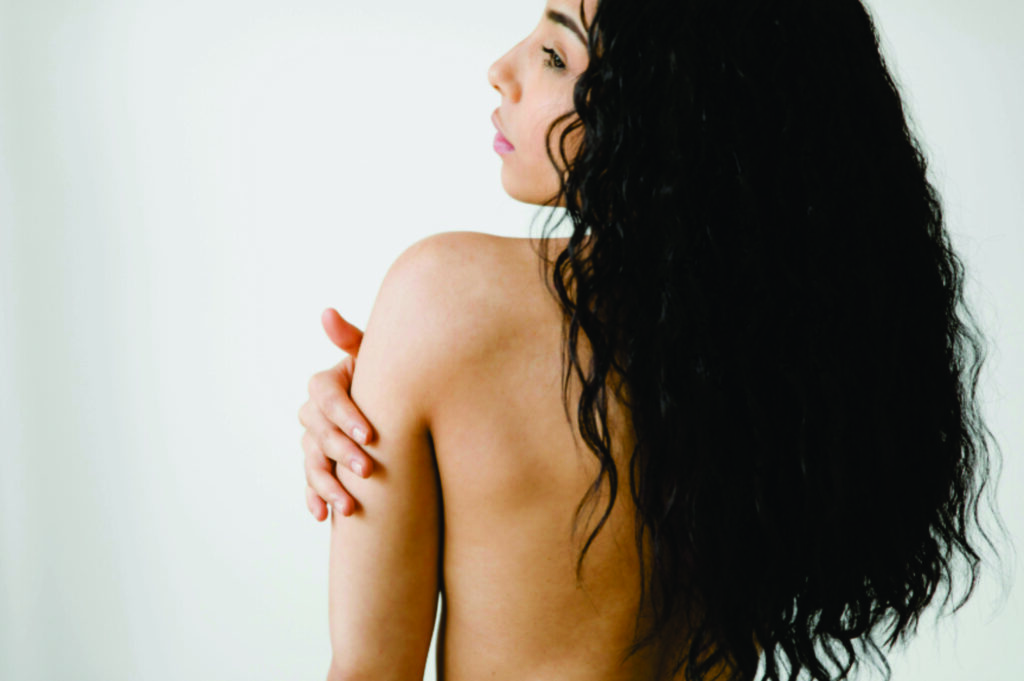Bleaching and coloring can completely transform your appearance—but they can also strip your hair of its natural beauty. Dryness, frizz, dullness, and breakage often follow chemical processing. If you want to restore hair after bleaching and coloring, you need more than one miracle product—you need a strategy that combines science, consistency, and care. This guide explores how to rebuild strength, shine, and resilience from the inside out.

Understanding the Damage
When bleach is applied, it oxidizes melanin—the pigment responsible for hair color—and dissolves it. But that’s not all. The cuticle, the hair’s protective outer layer, lifts up, exposing the inner cortex. This makes strands porous and more vulnerable to moisture loss.
Research confirms that bleaching leads to significant structural deterioration: the surface becomes rougher, lipids are removed, and the cortex loses elasticity (PMC, 2024). Another study found that oxidation breaks disulfide bonds in keratin, converting cystine into cysteic acid and permanently weakening the fiber (PubMed, 2018).
Understanding the science behind this process helps you focus on real recovery, not just cosmetic quick fixes.
A forum user once described bleaching as “turning my hair into toast.” She noticed that even when her hair looked okay after styling, it would snap easily when wet. That’s a key sign of internal damage—and why repair must start below the surface.
Hydration: The Foundation of Recovery
When learning how to restore hair after bleaching, the first step is rehydration. Hair that’s chemically processed has lost not only moisture but also its ability to hold it. The goal is to rebuild that moisture barrier gradually.
Deep Conditioning Treatments
Use intensive masks one or two times a week. The most effective ingredients include:
- Shea butter – restores moisture and softness.
- Hyaluronic acid – draws water into the hair shaft.
- Coconut oil – penetrates deeply and reduces protein loss.
- Glycerin – a humectant that keeps hair hydrated between washes.
Apply masks on damp, towel-dried hair and leave them for 20–30 minutes. Use a shower cap or wrap your hair in a warm towel to help absorption. Many users on haircare forums mention that regular masking restored shine and elasticity within 6–8 weeks.
Leave-In Conditioners
After washing, apply a lightweight leave-in conditioner to maintain hydration throughout the day. Products containing aloe vera, panthenol, and keratin help lock in moisture and smooth the cuticle. One user shared that her bleached curls became softer and easier to detangle once she added a keratin spray to her routine.
Nighttime Moisture Boost
If your hair feels straw-like, try applying a small amount of leave-in conditioner or a few drops of oil before bed. Wrap your hair in a silk scarf to prevent moisture loss overnight.
Strengthening Fragile Strands
Bleached hair is fragile because it has lost keratin—the structural protein that keeps hair strong. Restoring protein balance helps rebuild resilience.
Protein Treatments
Scientific studies show that hydrolyzed keratin and amino acids significantly improve tensile strength and flexibility (PMC, 2020). Products containing hydrolyzed silk, collagen, and amino acids fill gaps in the hair shaft, improving structure.
However, balance is crucial. Too much protein can make hair stiff and brittle (Byrdie, 2023). Alternate protein and moisture treatments weekly.
Forum story: One member with platinum hair said she used a protein mask every two weeks and a moisturizing mask in between. Within two months, she noticed less shedding and smoother texture.
Choosing the Right Shampoo and Conditioner
Sulfate shampoos are too harsh for bleached hair. They strip natural oils and fade color faster. Choose sulfate-free, color-safe options with nourishing ingredients like:
- Argan oil for smoothness.
- Rice water extract for strength.
- Vitamin E for antioxidant protection.
Look for pH-balanced formulas (around 4.5–5.5). Acidic products help close the cuticle and make hair feel silky again. A beauty blogger on Reddit noted that her toner lasted much longer once she switched to a low-pH shampoo and used a conditioner with ceramides.
If you swim, rinse your hair immediately after pool sessions. Chlorine worsens dryness and causes color fading. A clarifying shampoo once every two weeks removes buildup without over-drying.
Reducing Heat and Mechanical Damage
Even healthy hair struggles with excessive heat—bleached hair can’t handle it at all.
Heat Protection
Always use a protectant before blow-drying or styling. Ingredients like dimethicone, panthenol, and silk proteins form a barrier that minimizes thermal damage. Spray evenly on damp hair and comb through.
Air-Drying Techniques
Whenever possible, let hair dry naturally. Use a microfiber towel or soft cotton T-shirt to absorb excess water gently. Avoid rough towel-drying, which can cause cuticle cracks.
If you must use heat, keep tools under 160°C (320°F) and use the “cool shot” button on your blow dryer to finish.

Nourishing Hair with Natural Oils
Natural oils replenish the lipid layer stripped during bleaching. Regular use enhances shine, elasticity, and softness.
- Coconut oil: reduces protein loss by up to 40% (Journal of Cosmetic Science).
- Argan oil: rich in vitamin E and essential fatty acids that smooth the cuticle.
- Castor oil: boosts circulation to the scalp and supports growth.
- Jojoba oil: mimics natural sebum and prevents scalp dryness.
Warm a small amount of oil between your palms and distribute it from mid-length to ends. Leave it for at least 30 minutes—or overnight for deeper nourishment—then shampoo as usual.
Scalp Care: The Root of Healthy Growth
Healthy hair starts with a healthy scalp. Massaging the scalp improves microcirculation, oxygenation, and nutrient delivery to follicles. Studies confirm that daily scalp massages improve hair thickness and health over time (Koyama et al., ePlasty, 2016).
Use gentle circular motions with your fingertips for 2–3 minutes. You can enhance the experience by adding a few drops of rosemary or peppermint essential oil—both linked to improved hair density and faster growth.
Nutrition: Repair from Within
External care helps, but your diet plays an equally vital role in restoring hair after bleaching.
Key Nutrients:
- Biotin (Vitamin B7) – supports keratin production for thicker strands.
- Omega-3 fatty acids – reduce inflammation and dryness.
- Iron – helps deliver oxygen to follicles.
- Zinc – regulates oil production.
- Vitamin C – boosts collagen synthesis.
Eat more leafy greens, fatty fish, nuts, eggs, and citrus fruits. Some trichologists recommend supplements if deficiencies are confirmed through blood tests.
A forum contributor mentioned she began taking an iron and omega-3 supplement after bleaching. Within three months, she noticed fewer split ends and new baby hairs growing along her hairline.
Regular Trims and Night Protection
Split ends worsen over time and can travel upward, making hair appear thinner. Trim every 6–8 weeks to keep damage under control.
At night, use a silk or satin pillowcase to reduce friction. Cotton absorbs moisture, leaving hair dry and frizzy by morning. Lightly braid your hair or use a silk bonnet to protect it while sleeping.
Extra Tips:
- Avoid tight ponytails or buns.
- Use claw clips or fabric scrunchies instead of elastic bands.
- Finish your shower with cool water to seal the cuticle.
- Detangle gently using a wide-tooth comb or your fingers when the hair is damp and conditioned.
Lifestyle Adjustments That Support Recovery
Restoring your hair after bleaching isn’t only about products—it’s also about habits. Stress, poor sleep, and dehydration affect your scalp and hair growth cycle.
Drink enough water daily and ensure you sleep at least seven hours per night. Try stress-relief practices like yoga or breathing exercises. Chronic stress elevates cortisol, which can trigger shedding and slow growth.
One user shared:
“When I stopped using heat daily, started sleeping better, and drank more water, my hair completely changed. It wasn’t just smoother—it finally felt alive again.”
The Power of Consistency
Restoring hair after bleaching is a long-term commitment, not an overnight miracle. Studies confirm that consistent use of moisturizing masks, protein treatments, and scalp care leads to measurable improvement in strength and elasticity (Healthline, 2023).
Think of your new routine as rehabilitation—each wash, mask, and trim brings your hair closer to health. With patience, the results will show: strands will feel softer, break less, and gradually regain their natural shine.
Your hair’s recovery story begins today. Treat it gently, feed it from within, and protect it daily—and soon, your once‑bleached hair will be not just repaired but radiant.

I’m Victoria, the creator behind Eva My Balance. Passionate about beauty, wellness, sustainable living, and mindful self-care. My mission is to inspire you to live consciously and beautifully—inside and out.


